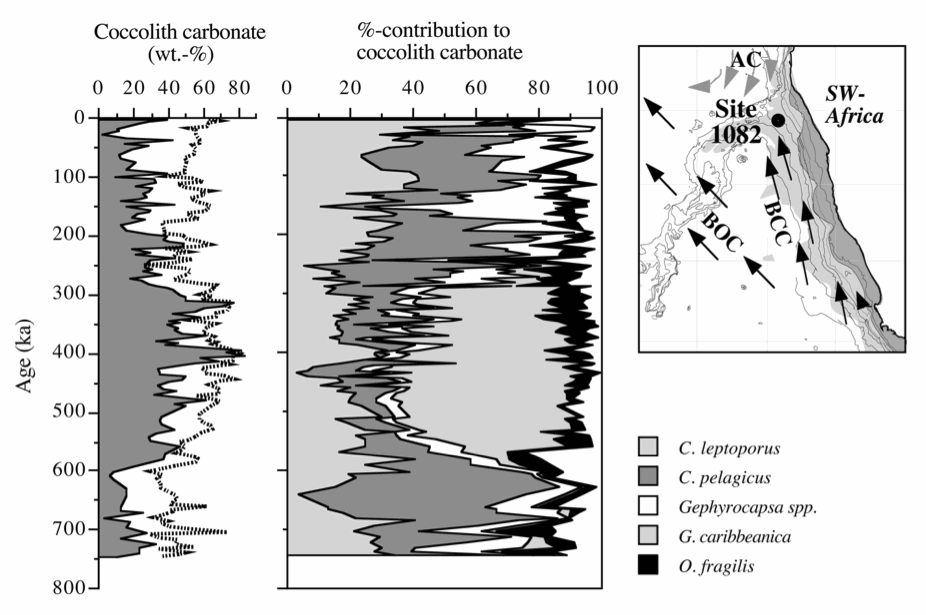|
(bisher kein deutscher Text verfügbar)
Coccoliths build up the dominant part of the total carbonate in the Pleistocene as shown for Site 1082 off SW-Africa where they constitute a significant fraction of the carbonate content during most of the last 680ka.Only few species significantly contribute to the coccolith carbonate. The relatively massive species C. leptoporus and C. pelagicus as well as the numerically dominant gephyrocapsids are the most important contributors. The calculated coccolith carbonate content is obviously linked to the bulk carbonate record and, therefore, is indicative for the development of the productivity regime of this area. The dominance of coccolith carbonate of up to >80 wt-% (>95% of the total carbonate) during the mid-Brunhes time (580 to 280 ka) indicate that a change in the productivity of the northern Benguela upwelling system have occurred. This time interval is characterised by a significant increase in carbonate (total as well as in coccolith derived CaCO3) that is associated with the appearance of Gephyrocapsa caribbeanica.
Baumann, K.-H. & Freitag, T. (2004): Pleistocene fluctuations in the Benguela Current system as revealed by coccolith assemblages. Marine Micropaleontology, 52: 195-215.
Preiss-Daimler, I., Baumann, K.-H. & Henrich, R. (2012): Carbonate budget mass estimates for Neogene discoasters from the Equatorial Atlantic (Ceara Rise: ODP Site 927). Micropaleontology, 31(2):169-178. DOI: 10.1144/0262-821X11-014. | | 
Coccolithenkarbonatdaten Site 1082 (Baumann & Freitag, 2004)
| |


